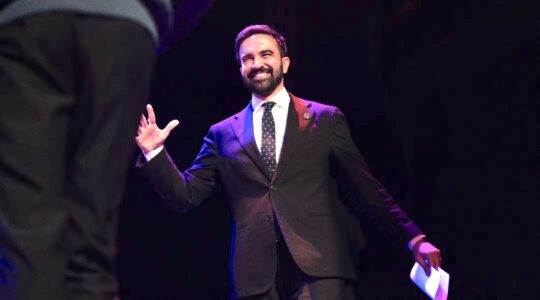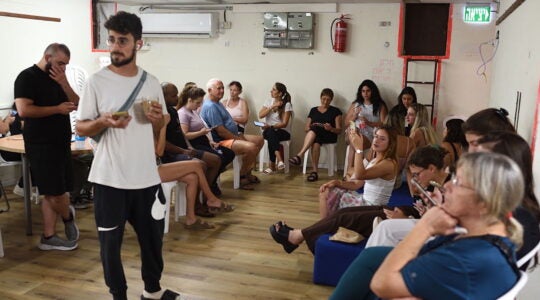Essay
Have you ever gotten a piece of mail back from the post office — one stamped with that funny-looking hand, and bearing the words “Return to Sender”? Well, I recently did, and as I began to think about both those words, and the pointing hand that accompanied them, I began to think about how appropriate it was to get that message as Rosh HaShanah was fast approaching.
“Return to Sender” — it means more than either the U.S. Postal Service or Elvis Presley, who made the phrase famous with his 1962 hit song, ever understood. That, or the postmaster general and Elvis are unrecognized spiritual masters — rebbes of the deep meaning of Rosh HaShanah. Return to sender, after all, is actually the promise of the holiday.
Each year, Rosh HaShanah promises us that we can return to our sender. No matter what the previous year has brought, no matter how estranged we have become, and no matter how lost we may be, we can find our way back.
We can not only start over on Rosh HaShanah, but actually return to a time and place, whether real or imagined, when everything was fresh and new, and it all made sense. Rosh HaShanah invites us back to the beginning.
It’s as if we can return to the Garden of Eden where, according to the Book of Genesis, the first humans, whose birthday we celebrate on Rosh HaShanah, originally lived. In returning to that time and place, we can return to ourselves, to those we love and to our sender. That is what teshuvah, usually translated as repentance, literally means — to return.
Imagine being able to return to your “Sender” — to your Source — to the source of the meaning and purpose you seek, to the source or sources that give you the power to be who you most want to be. Imagine trusting that, regardless of what has happened over the course of the last year, that person is who you really are, and you can find that person once again on Rosh HaShanah.
But how does that happen? How can we find our way back to our source and to our sender?
We find our way back in the crisp freshness of an apple dipped in honey — allowing ourselves to taste both the tang and sweetness, both of which are part of most lives, and experiencing our ability to make things sweeter than we initially find them.
We find our way back when we choose to wear something new or something white for the holiday, renewing ourselves on the outside in order to help us do the same thing on the inside. Clothes might not entirely make the person, but they sure do help express who it is we want to be.
We find our way back as we walk again into a sanctuary from which we may have become estranged, or in the walk we take with someone with whom we want to start over. In either case, we show our trust that whatever happened before, we are giving each other a fresh start, and that this fresh start is how things are meant to be.
We are a people of practice, so as you celebrate Rosh HaShanah — wherever and however you choose to do so — try the following practices, and allow them to help you return to the sources and senders in your own life.
Pick a food for the holiday, one that signals your hopes for the coming year, and pick a moment to savor that food. Better yet, do so with people that you love, explaining to them the reason behind your choice. How does the food you have chosen capture the essence of whom or what you hope to return to?
What garment could you wear that would help you feel, as you put it on, that you are returning to who you want to be? It’s a tradition as old as the tallit, which helped newly freed slaves appreciate that they really could be a nation of priests and a holy people despite centuries of degradation, and the tradition can work with other garments as well.
Rosh HaShanah does not invite us to simply forget the past, or to naively wish it away either. But it does remind us that while the past should not be forgotten, we need not let it define either our present or our future.
In fact, Rosh HaShanah invites us to “Return to Sender” — to return to both the One, and to the ones, who got us where we are today, and by doing so, return to the future we hope to have in the year ahead.
Rabbi Brad Hirschfield is president of Clal – The National Jewish Center for Learning and Leadership and author of “You Don’t Have To Be Wrong For Me To Be Right: Finding Faith Without Fanaticism.”
The New York Jewish Week brings you the stories behind the headlines, keeping you connected to Jewish life in New York. Help sustain the reporting you trust by donating today.




